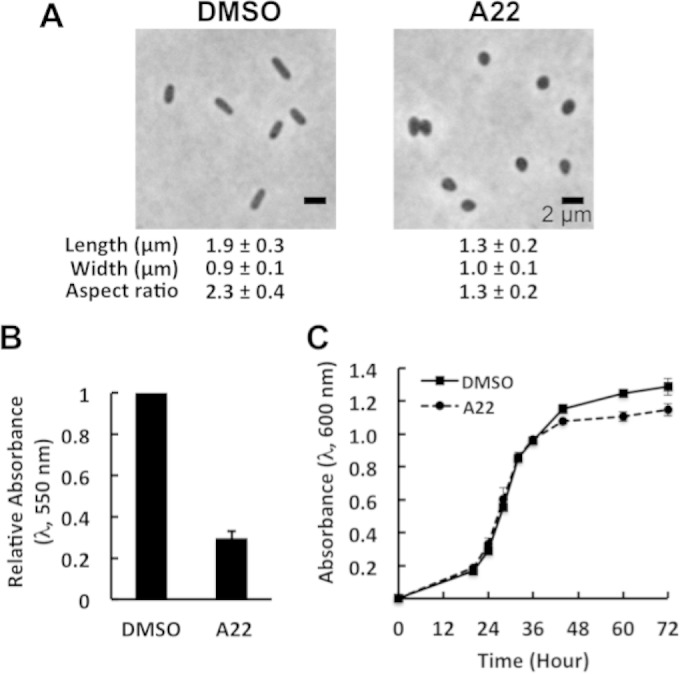FIG 6.

A22 treatment impairs biofilm formation. (A) Images depicting the morphology of R. sphaeroides wild-type (WT) cells treated with DMSO or 10 μg/ml A22. Each datum point was determined by imaging 300 cells by phase-contrast bright-field microscopy and using ImageJ to determine cell width and length. Shown are mean values ± standard deviations. Differences between the cell shape parameters of the two treatments were analyzed by Student's t test. The P value for all of the parameters measured was <0.001. (B) Quantification of biofilms formed by R. sphaeroides WT cells treated with DMSO or 10 μg/ml A22. Biofilms were grown in Sistrom's succinate medium containing DMSO or 10 μg/ml A22 on a polystyrene microtiter plate for 72 h at 30°C and then stained with CV. The extent of biofilm formation was determined by measuring the absorbance of CV at a wavelength of 550 nm. Shown are mean values ± standard deviations obtained from three independent experiments, each performed in eight replicates. (C) Growth curves of R. sphaeroides WT cells treated with DMSO or 10 μg/ml A22. Cells were grown in Sistrom's succinate medium containing DMSO or 10 μg/ml A22 in glass test tubes at 30°C with shaking. Shown are mean values ± standard deviations obtained from three independent experiments.
